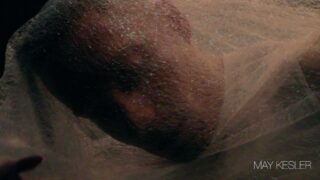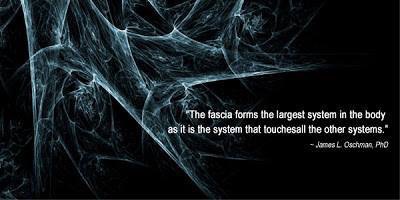
More Physical Therapy Articles
Unraveling Fascia For Your Fitness and Health

Physical therapy was originally taught to evaluate muscles. But we now know that muscles are embedded in fascia, a 3-4 dimensional web of collagen, light filled, fluid filled tubules that is within us, head to toe, finger to finger. Every cell is surrounded by a thread of the web like tubules, and it even goes into the nucleus of every cell –bone, nerve, organs, heart, brain, muscle, fat, etc. There are no dividing lines or spaces between muscles, tendon, ligament, bone. The tissue is continuous between spine to tongue to heart to lungs to organs.
This means as a physical therapist that we now look at the body as a whole continuous unit, whose parts are intimately interconnected, and communicate instantaneously with each other. When a thread in the web is pulled, all the other places in the web are affected by that strand being pulled, and instantly change in relation to it.
This is a profound difference in our approach to healing. An injury is never isolated; it always affects other areas. Fascia tubules exert tension and compression in the web that give us the ability to maintain our shape with gravity. When there is inflammation, whether due to an injury, illness, or overuse, the ground substance becomes sticky and forms a gel, and the web forms adhesions, knots, twisting in its fabric, dehydrating the cells, causing more inflammation and restrictions.

This can cause pain, as the fascial tension can create 2,000 pounds of pressure per square inch on the tissues it surrounds. The structures can’t move as they were meant to, whether it’s musculoskeletal tissue or any other organ in the body. So we now check for many of the systems in the body, even if the complaint seems to simply be one area. We use myofascial release, manual therapies, and fascial fitness methods, mind- body movement techniques to help unwind and unravel the restrictions, returning hydration, coordination, strength, and stability, allowing the body to use it’s pathways to heal itself.
That’s a lot of technical information, so here’s an easier way to think about it – compare fascial restrictions to hair. When you don’t comb your hair, it gets knotted up easily, and the more knotted it gets, the drier it gets and the more easily it knots. Trying to untangle the knots with a fine toothcomb will only tear the fibers more. We want to use a soft brush, gently unwind the tangles. “Conditioners” can be rest, decreasing stress, good nutrition, frequent short bouts of exercise, moving the body in motions the opposite of what you spend your day doing (lengthening out arms, hands, back instead of facing phone or computer for example). Learning about how to sense and unwind your fascial fabric is one of the most important selfcare things you can do, for your health and longevity.
This video explains more about fascia: https://vimeo.com/759112375

















